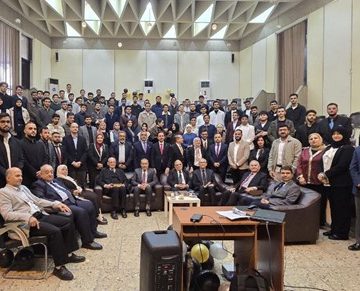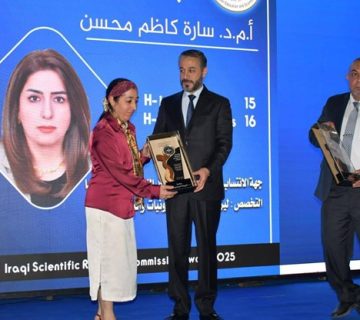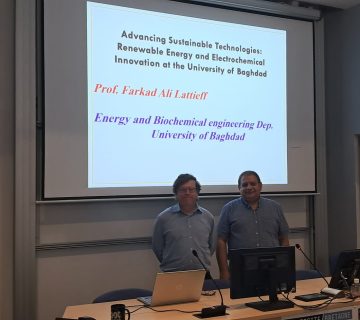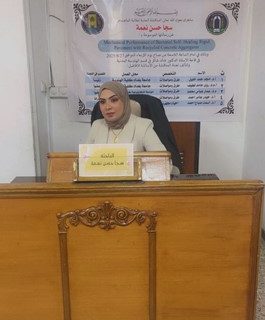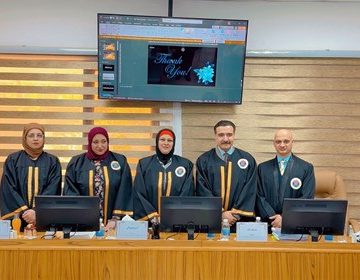The master’s thesis by the student (Ahmed Jasim Qasim). Was discussed in the Department of Civil Engineering on the research entitled (Some Properties of Perlite Concrete Reinforced with Hybrid Fibers and Containing Sustainable Materials) on Sunday, 19/5/2024, in Dr. Khaled Shaker Hall. Under the supervision of (Prof. Dr. Nada Mahdi Fawzi)
The discussion committee was formed of:
- Dr. Ali Hussein Ali Al-Ahmed University of Baghdad/College of Engineering (Chairman)
- Prof. Hadeel Khalid Awad University of Baghdad/College of Engineering (Member)
- Prof Dr. Ali Attiea Jaber University of Technology/College of Engineering (Member)
- Dr. Nada Mahdi Fawzi University of Baghdad/College of Engineering (Supervisor)
Abstract
To reach sustainability, it is important to use waste resources in manufacturing concrete, employ alternative components, and minimise the production of Portland cement. Ordinary Portland cement (OPC) is the fundamental component used in the conventional process to produce concrete. However, the OPC industry has environmental concerns because it produces carbon dioxide (CO2).
In this study, combined fine and coarse expanded perlite aggregate was used to create structural lightweight aggregate concrete, which will have the benefit of lowering the structure’s dead weight and reducing the thermal conductivity. This work examines the impact of incorporating sustainable recycled copper fibres and alkali resistance glass fibres on the properties of perlite structural lightweight aggregate concrete containing local sustainable materials. The research includes slump, density, and thermal conductivity tests, and tests at 7, 28,60 and 90 days curing for compressive strength, tensile strength and flexural strength, as load-deflection curve (toughness index, ductility index and resilience index) test at 90 days of curing, and drying shrinkage and creep test after 28 days of curing. The materials used to cast the specimen are ordinary Portland cement with a cement content of 350 kg/m3, metakaolin, which replaced 15% of the weights of cement as pozzolanic materials, local ash was replaced by cement weight in per cent of 10%, combined coarse and fine perlite aggregate, W/Cm ratio was 0.4, and super-plasticizer. The cement-to-perlite ratio was 1:2 (volumetric ratio). The concrete reinforced 1% of fibres by volume of concrete.
The results show that the workability of concrete reduces after adding fibres, and the density increases with the incorporation of mono or hybrid fibres. Concrete samples containing fibres have higher thermal conductivity than other reference sample mixtures without fibres; the increase is slight and within acceptable thermal insulation standards. Also, the results of compressive, splitting, and flexural strength show the reinforced samples with fibres have higher values than the reference mix.
After scientific discussion by the respected members of the discussion committees and listening to the researcher’s defense, he obtained a master’s degree in civil engineering.



